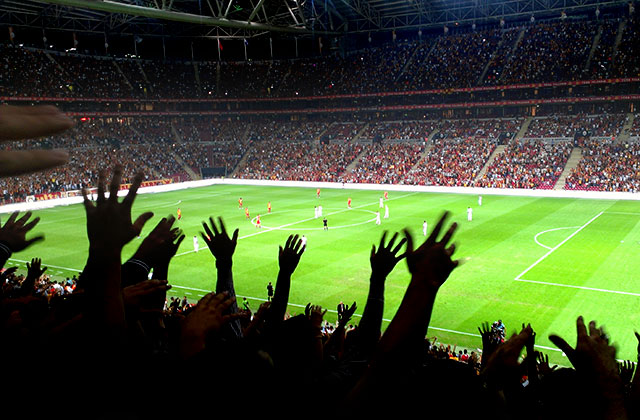Family legend tells us that he had supported the club since the days of the Kursaal, that he went to Chesterfield for the abandoned cup game in 1938, and that when he was very ill, he would be on his sick bed all week, but make a remarkable recovery for the match on Saturday before returning to his sick bed after the game. He would have been a teenager when the club was formed in 1906 and I like to think that he went to watch them at the old Roots Hall. He was a builder, and built many houses in Eastern Avenue, Priory Crescent etc. He would work Saturday Mornings but then take his workers to the Buffet at Southend Victoria Station to pay them at Lunch time over a pint, and then slip off to the game for the match before going home.
I did briefly talk football with his son, one of my uncles who told me how they used to walk from Rochford to the Kursaal for games and then walk back again afterwards. They all loved the Kursaal close to the pitch, intimidating etc. but disliked the Stadium too far from the pitch and no atmosphere.
It's 74 years since we moved from the Kursaal to the Stadium and what I want to know has anyone got any personal or passed down stories of this time?
Go and quiz your Granddad, Nan, Uncles, Aunties or anyone who might remember. It's a big ask but the longer we leave it the harder it will become. If you find out anything let the Little Gazette know, this is an important part of our, and Southend United's, history
To understand what the ground was like, the following is a précis of the Kurzaal ground from Peter Miles and Dave Goodys superb book "A Century United".
The Marine Park at the Kursaal had been opened in the 1890's and had been used by Southend-on-Sea F.C. who later changed their name to Southend Athletic, it had changing rooms at the Beach end of the ground. After the demise of Southend Athletic the ground was not used, but after the first world war, Southend United found themselves groundless and moved into the ground for the 1919/20 season.
The North East corner had to be enclosed, entrances built at the North and South ends access being gained from Woodgrange Drive and Beresford Drive, embankments were constructed around the ground, and the pitch was enclosed by a fence with a nine foot clearance. There were no stands or cover, but the pavilion in the south-east corner was luxurious. It housed a boardroom, clubhouse and gymnasium and the changing rooms had large communal baths and a hot geyser and the match officials had their own facilities.
During the first season two small temporary stands were built on either side of the ground, but when we obtained admission to the football league the next season (1920-21) further improvements took place. A 1,500 seater stand was built on the eastern side, (Arnold Avenue). The ground could allegedly hold 23,000 but less than 12,000 turned up when we played Spurs. In 1921 the famous Waterchute was erected.
The ground was sufficiently admired to hold Essex County representative matches and in 1926 the all time record attendance of 18,153 watched the Nottingham Forest Cup match.
In 1927/28 greyhound racing was introduced round the Kursaal ground, but this led to an ultimatum from the football league to either stop dog racing OR be expelled from the football league. Dog racing stopped.
A new stand was erected on the West Side of the ground completed by December 1928, and could house 3,000 spectators under its 25 foot high roof. It was another six years before glass screens ends to the stand to stop the high sea winds blowing through the stand.
At the end of season 1933/34 it was decided to break the lease and move to the newly built stadium, costing the club money and having to leave the stands behind.
The book gives a detailed account year by year of each season highlighting the comings and goings of players. See pages 200 and 202 for excellent pictures of the ground and the fans in a game against Newport in 1922. The book also shows pictures of the players and programmes from the time.
Please write in to 'Roots Hall Roar' or 'E-mail the Editor' on the front page if you know of anything about the old ground that can help DoDtS in his research.
